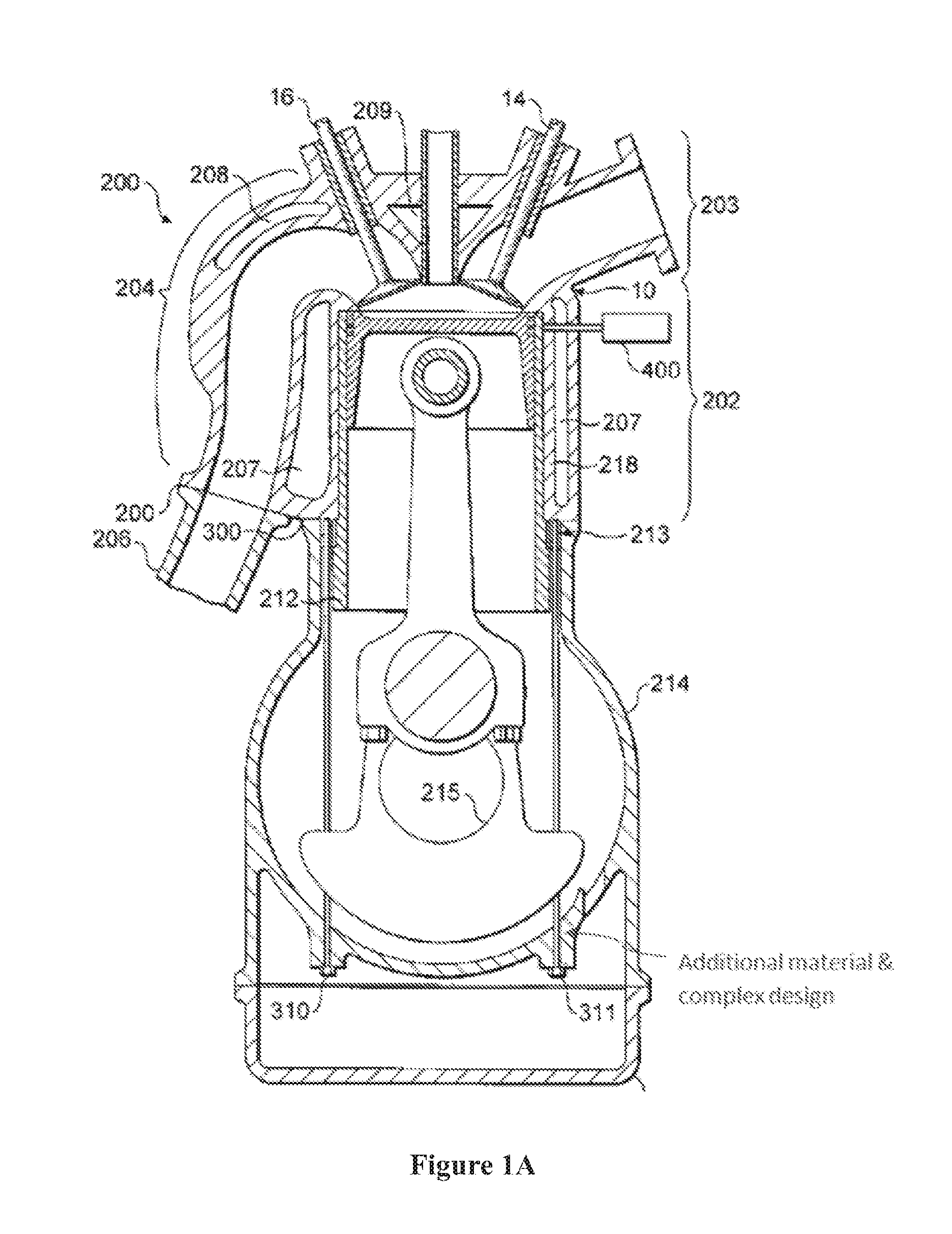Monoblock Engine
a monoblock engine and crankcase technology, applied in the direction of machines/engines, mechanical equipment, cylinders, etc., can solve the problems of increased manufacturing time, assembly time and development & production costs, increased cost, and further cost increase, so as to simplify the design of cylinders and manifolds, reduce production costs, and reduce leakage at the interface of monoblocks and crankcases.
- Summary
- Abstract
- Description
- Claims
- Application Information
AI Technical Summary
Benefits of technology
Problems solved by technology
Method used
Image
Examples
Embodiment Construction
[0031]As shown in FIGS. 1 and 1A and FIGS. 2 and 3, the external and internal construction of the monoblock engine (1) are such that there are no parts that protrude awkwardly which when cast would come in the way of extracting from the casting mould.
[0032]Accordingly, the cylinder head (2) and manifold (at least one) are integrated with cylinder block (3) and shaped as a monoblock. By integrating cylinder head (2) and manifolds with block (3), the critical joint between head (2) and the block (3), and head (2) and the intake manifold (5) will be eliminated. At the same time, gaskets and mechanical fasteners for tightening also can be eliminated. The water jacket (17) design is communized and optimized for both head (2) and the block (3) for better performance. Furthermore, all openings are maintained on a partition line (19) so that core design will be easier. Special core removal holes (18) are provided in order that the water jacket (17) may be constructed as a single continuum a...
PUM
| Property | Measurement | Unit |
|---|---|---|
| Time | aaaaa | aaaaa |
| Thickness | aaaaa | aaaaa |
Abstract
Description
Claims
Application Information
 Login to View More
Login to View More - R&D
- Intellectual Property
- Life Sciences
- Materials
- Tech Scout
- Unparalleled Data Quality
- Higher Quality Content
- 60% Fewer Hallucinations
Browse by: Latest US Patents, China's latest patents, Technical Efficacy Thesaurus, Application Domain, Technology Topic, Popular Technical Reports.
© 2025 PatSnap. All rights reserved.Legal|Privacy policy|Modern Slavery Act Transparency Statement|Sitemap|About US| Contact US: help@patsnap.com



